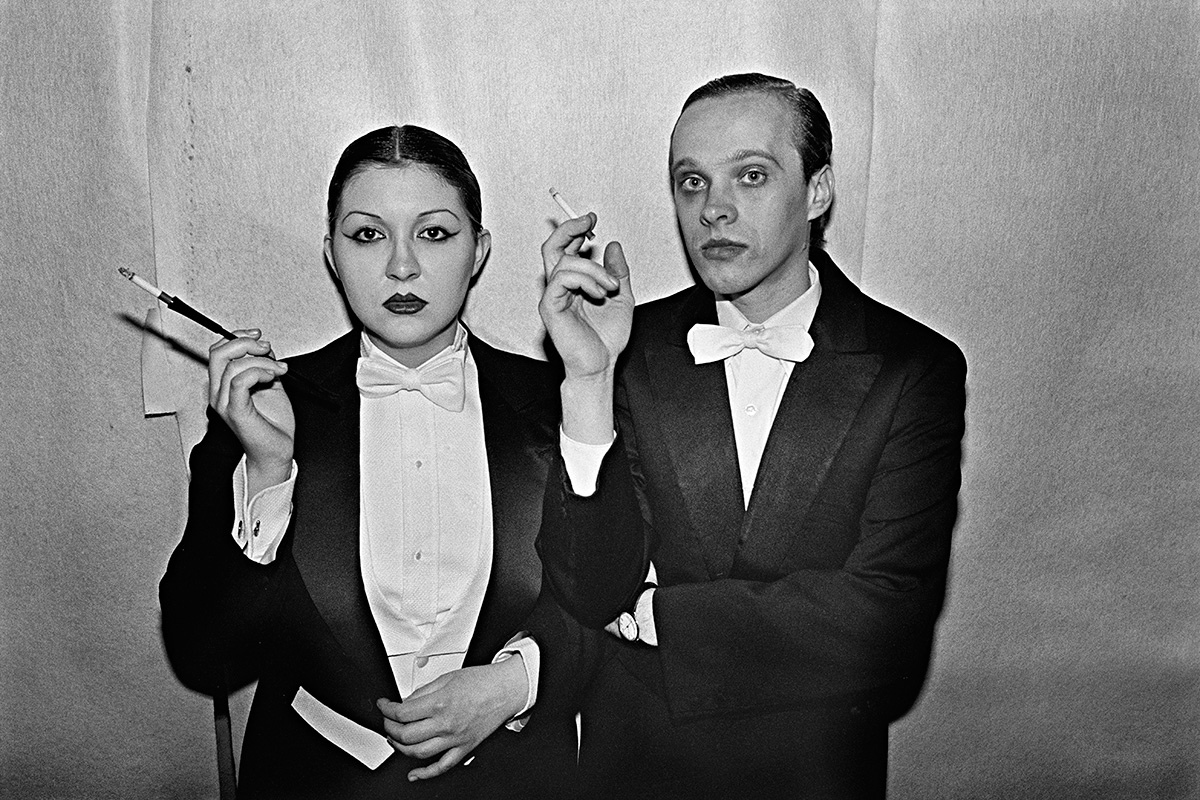Dressed in crisp tuxedos, hair slicked back, the pair in Bill Bernstein’s “Studio 54 Couple” are as severe as they are striking, punctuated by a shared tilt of the wrist, neat cigarettes in tow.
It’s tempting to situate the couple, and by extension New York City’s underground dance culture, in a vibrant but ultimately vacuous space—a transient one where genius gives way to glamour. But, in doing so, one belies the spirit that equaled, or rivaled, even, the music rippling just below ground.
As curators Adrian Loving and Vikki Tobak explore in their 2017 FotoWeekDC exhibition Shoot to Thrill: Picturing New York’s Underground Dance Music Culture 1977-1999, nowhere did a communal, haven-like space emerge as acutely as in the city’s underground clubs.
Among the most popular of these was Paradise Garage, a venue that dance historian Sally Sommer characterizes as “a style, a fashion—a place to scope and be scoped.”
It was at Paradise Garage that the Brooklyn-born DJ Larry Levan came into his own, blurring the line between spinning singles and creating a spontaneous, singular sound.

“Innovative for his use of technology and remixing, Levan excelled in creating an emotional response in his crowds, getting thousands to dance and creating a magical, experimental set in the process,” Loving says.
That evocative energy extended to the city’s hardcore dance clubs. At David Mancuso’s Loft, the city’s lithe and luminous came to exchange in an immersive, wordless mélange of studied, spectacular dance.
“Unlike the Garage, the Loft was not a place to display, to dress up and pick up,” Sommer explains. “You came to dance your brains out.”
The Loft’s sober dress code, which, more often than not, took the form of tank tops, loose pants, and sneakers, attests to this pared-down aesthetic—one that privileged dance above all else.
“These people knew how to move their bodies in a crowded room,” Loving says. “They were really there for the music and, when the DJ was spinning a hit, they could lose themselves in the moment.”

These dancers, then, were in conversation not so much with the lyrics pulsing through the club’s sound speakers but with each other. What emerged most fully from these underground spaces was a paradoxically intimate exchange.
On the heels of the 1969 Stonewall riots—when members of the LGBT community fought against a police raid of the Stonewall Inn in Greenwich Village—these underground dancehalls became, for the marginalized at least, a kind of refuge from the city’s mounting bigotry.
“These clubs allowed for a freedom that was heretofore unknown in the city,” Loving says. “The idea that, after working a long day, you could visit the club and dance your troubles away was a powerful one.”
But they were more than just a refuge for individuals—they served and created communities.
“Identity is about seeing people you are comfortable around, people who share your values, with whom you get along on the dance floor,” Loving says.
Something spiritual, too, was taking place. Here, under the shadow of night, dancing served as a kind of release, a cathartic experience as transformative as it was transfixing.

Though Sommer maintains that much of this had to do with the gospel or gospel-inspired music pulsing through these clubs, there is something to be said for the simple act of congregating around a creative impulse—one removed from society’s scrutinizing, scowling gaze.
She captures this best in her description of the house movement, derived from the underground disco clubs of the 1970s:
“Hard-core Househeads have recreated that liminal and almost ideal transitional world in which they experiment with multiple states of mind and shifting identities, through total body and athletic endeavor. This is not a display of the person, clothes, or status, but of movement and imagination. They gather to dance, and Underground-House provides them with the redemptive social space in which to attain individual and communal harmony.”
What Sommer asserts and Loving confirms, then, is the role of underground dance culture as a fashion spectacle, to be sure, but also as a panacea—a place of escapism where, almost unconsciously, individuals found in the strictures and structures of dance a freedom unknown to them above ground.
FotoWeekDC runs from November 11 to 19 in venues across Washington, D.C. View the full schedule here.
Angelica Aboulhosn is the public affairs specialist at the Center for Folklife and Cultural Heritage.
Reference
“C’mon to my house: Underground-House Dancing” by Sally Sommer, Dance Research Journal, 33(2), 2001


